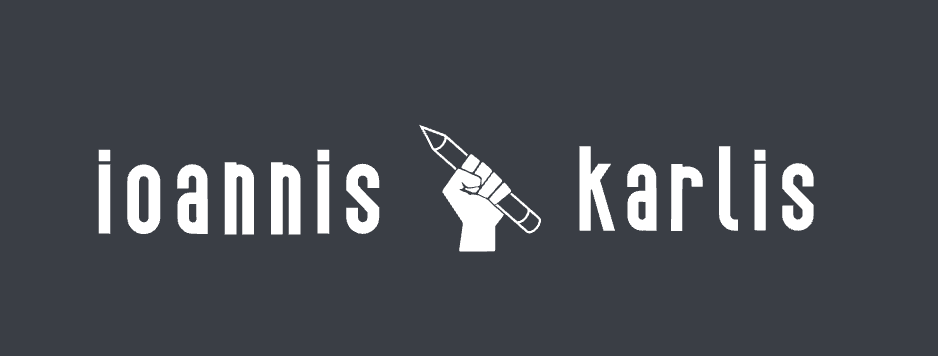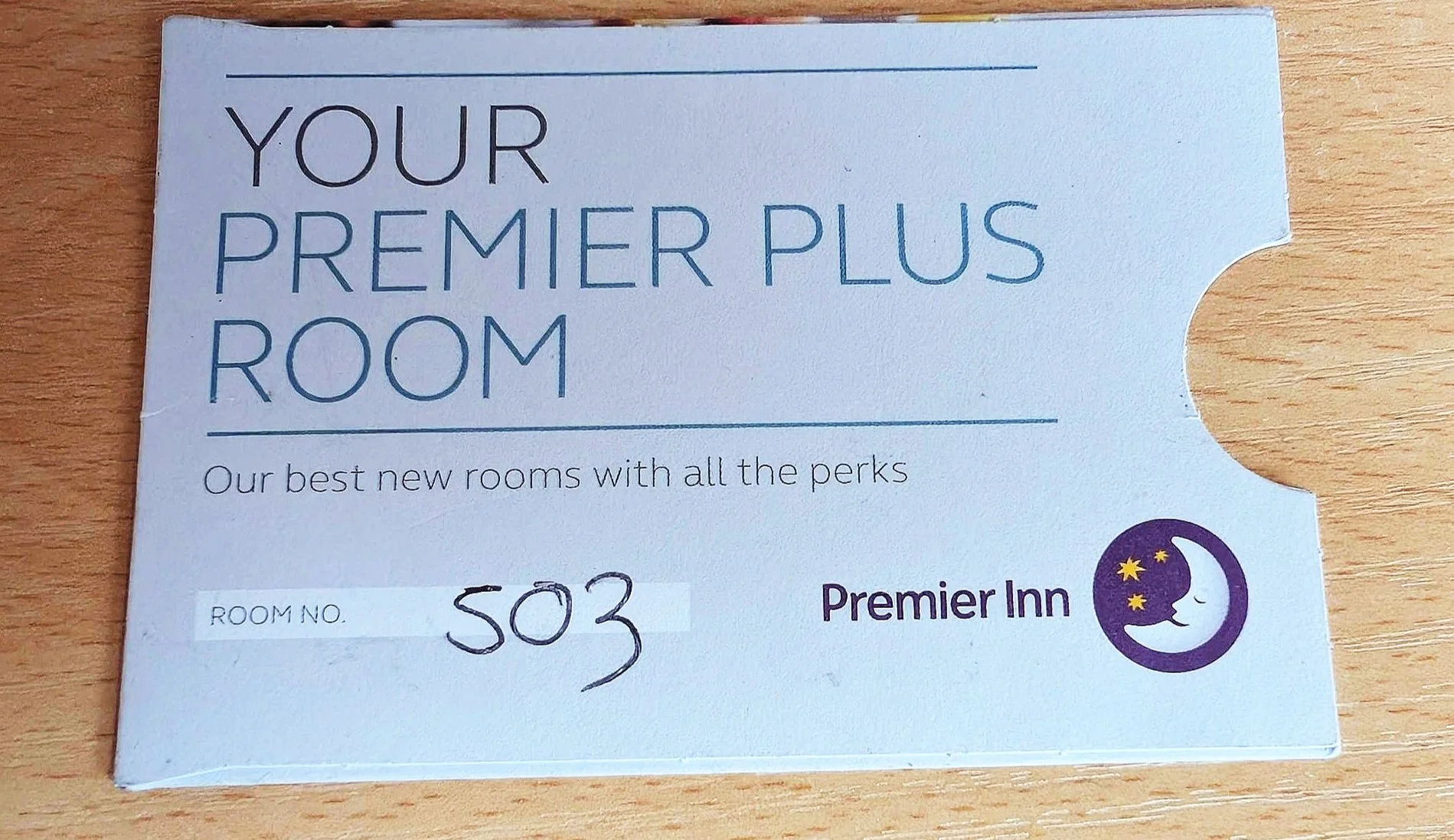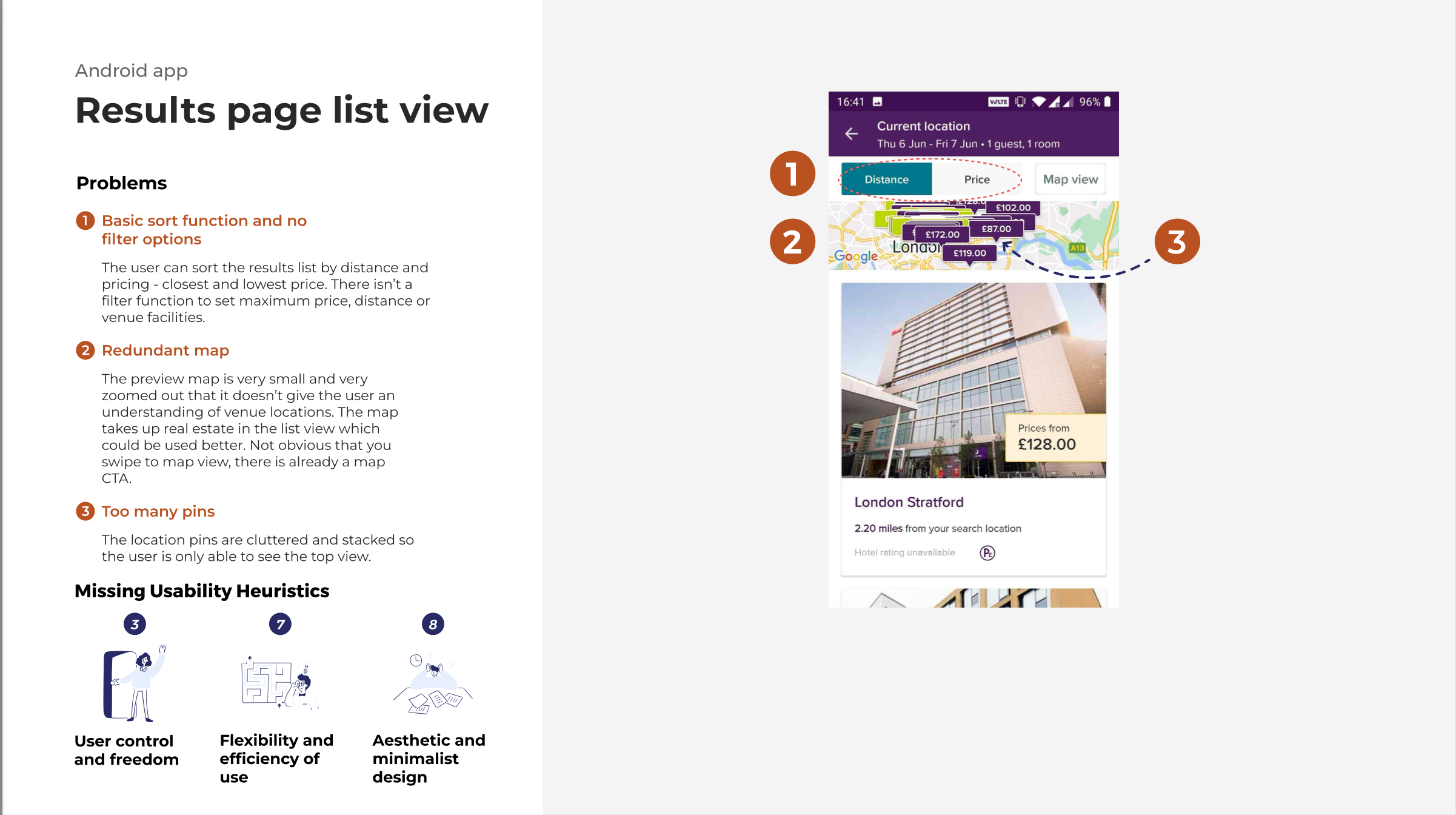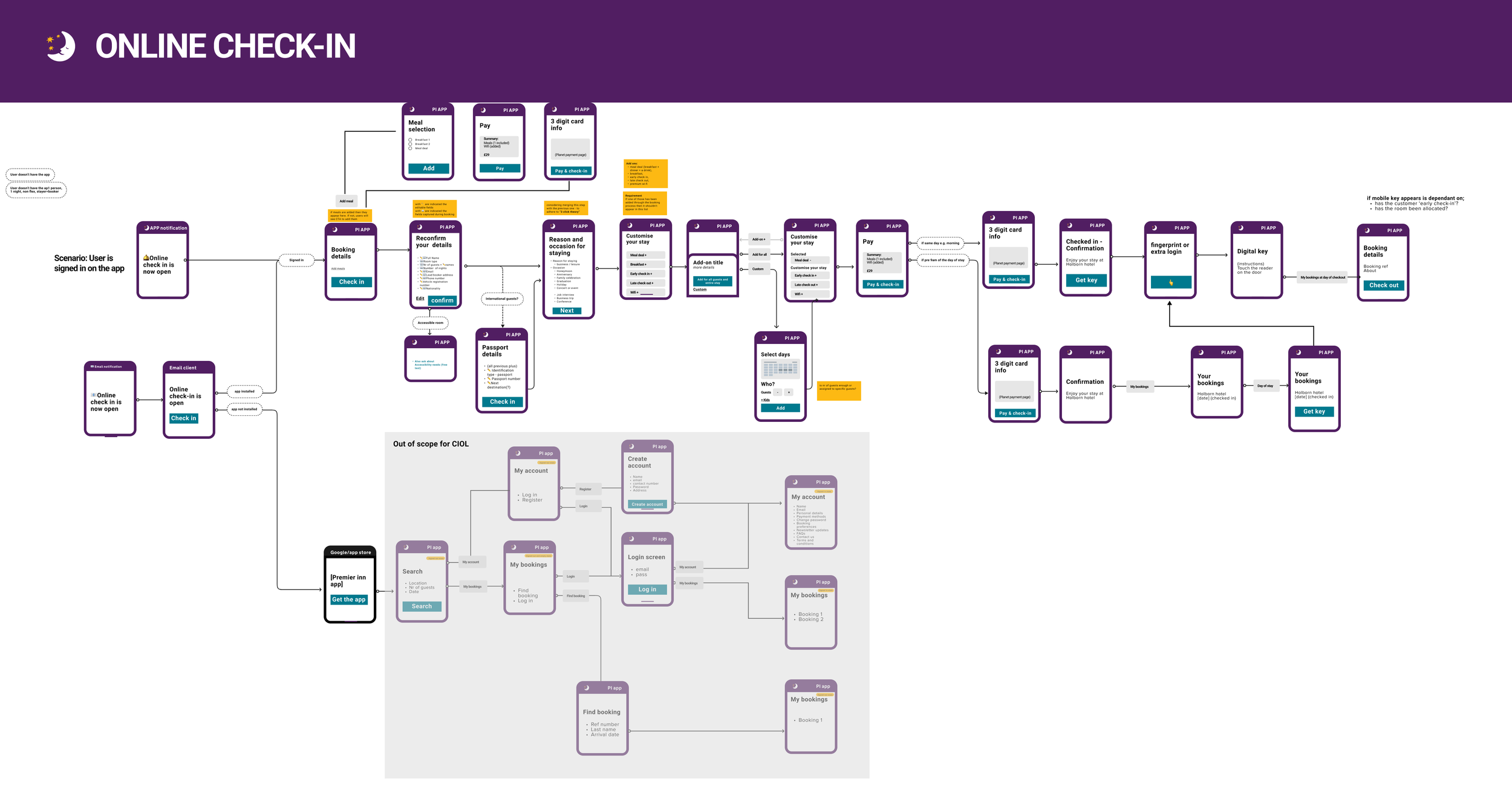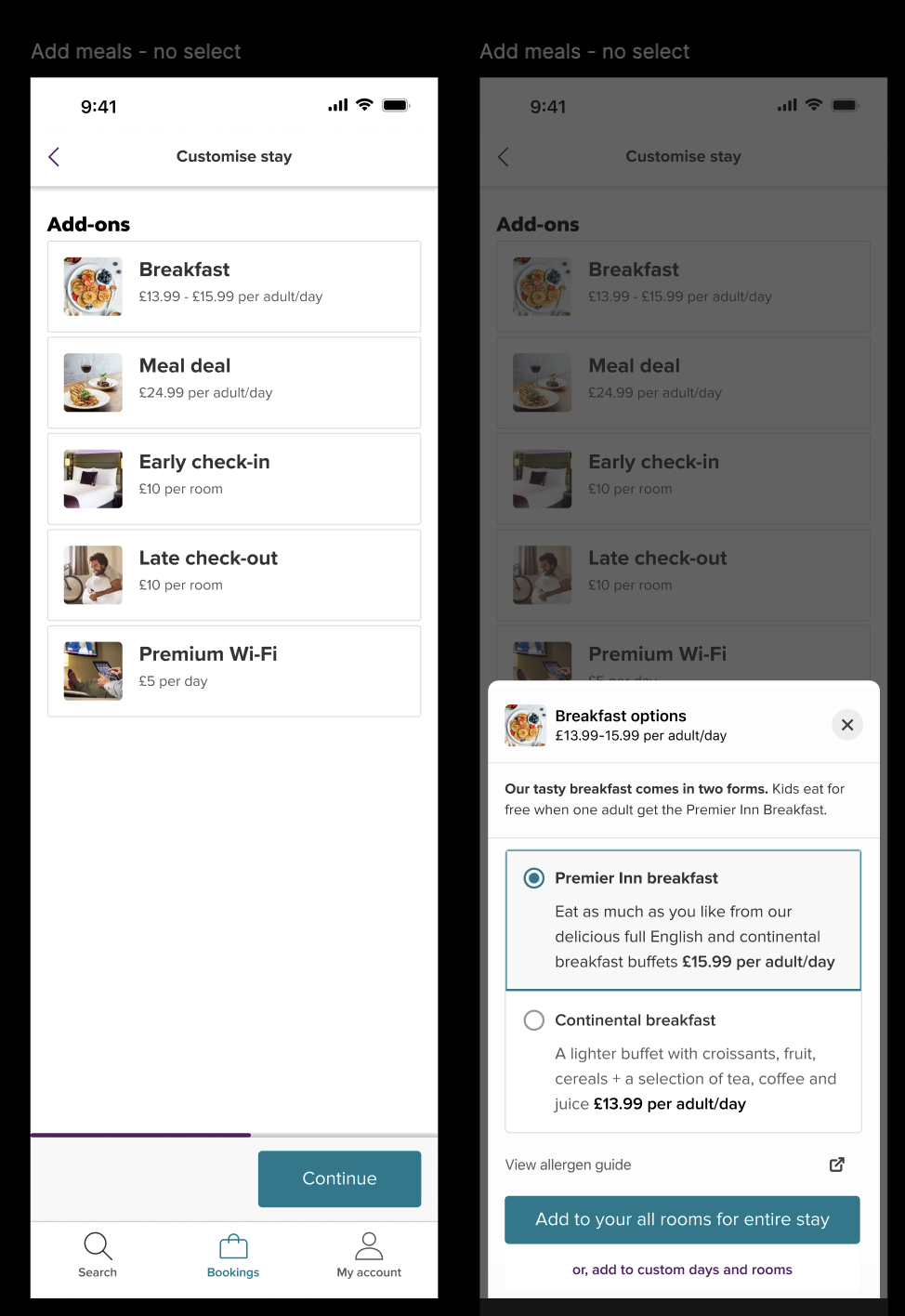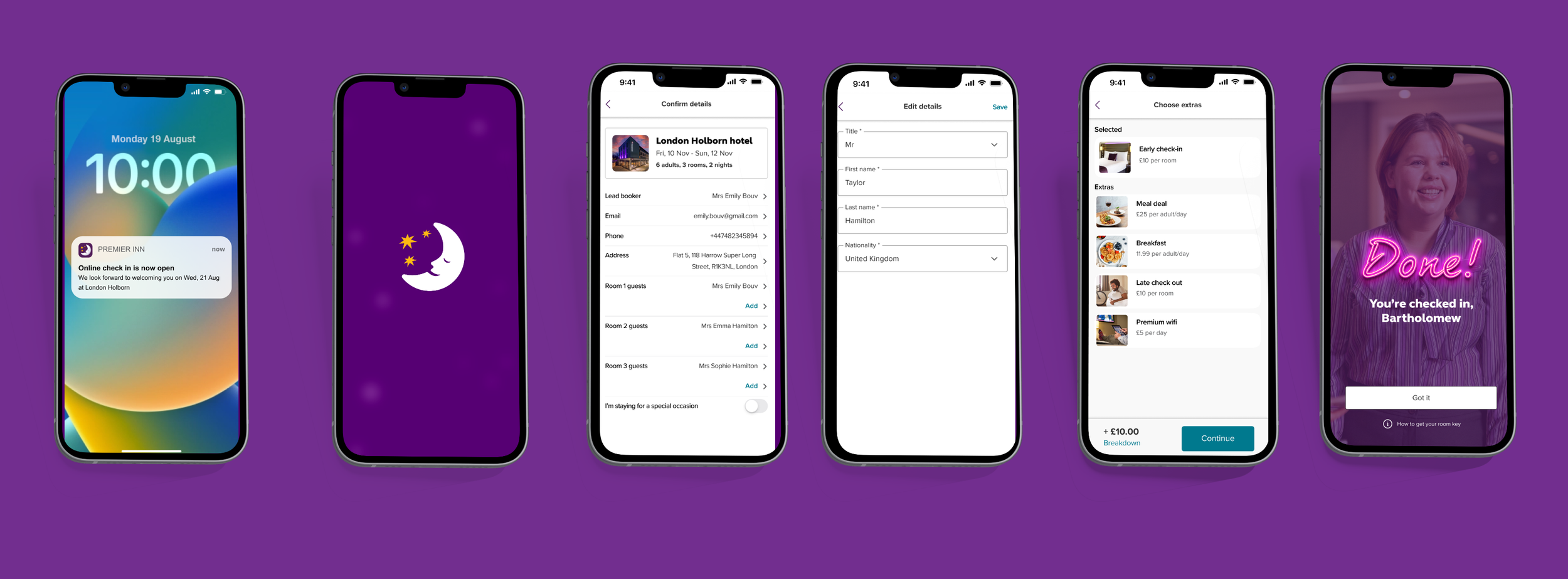Premier Inn App
A best-in-class, self-serve mobile check-in experience
A little intro to Premier Inn
Premier Inn, one of the largest hotel chains in the UK, is a subsidiary of Whitbread PLC, a leading hospitality business that also owns popular restaurant brands like Beefeater and Brewers Fayre, and once owned Costa Coffee. With 785 hotels in prime locations, Premier Inn is known for its consistently high customer satisfaction ratings.
Although primarily a UK brand, Premier Inn has started expanding into international markets. The chain is renowned for its delicious breakfast offerings, comfortable beds designed for a good night's sleep, and family-friendly accommodations.
Project goal
The goal of this project was to implement an intuitive app check-in feature, aiming to simplify and expedite the room check-in process while enhancing overall customer satisfaction and meeting business requirements.
We aimed to create a seamless app companion experience that delivers an optimised user experience, facilitates self-service, and positions Premier Inn as best-in-class within the industry.
This project focused on designing and developing a self-service online check-in experience for Premier Inn. The scope included enabling guests to purchase simple add-ons, providing a welcoming digital experience, and ultimately allowing them to access their rooms as quickly and efficiently as possible
Part 1 - Understand
Interviews
Team Interviews: The researcher and the team conducted interviews with Premier Inn staff members to understand operational contexts, the impact of check-in challenges, and perceptions of our pitch concept for Check-In Online (CIOL).
Customer interviews: We also spoke to customers to understand UK travel contexts, the impact of past check-in experiences, and perceptions of the pitch prototype CIOL prototype.
Hotel tours
With the help of our Product Owner we conducted 6 Premier Inn hotel site visits in London to analyse check-in procedures, customer service approaches, different entrance layouts, use of signage and how self-serve kiosks were used by customers
Competitor stays
We conducted competitor stays at two hotels to evaluate their guest experience, focusing on check-in procedures, digital key functionality, and other innovative features.
This hands-on research provided valuable benchmarks and insights for identifying opportunities for differentiation.
App audits
The UI designer and I conducted comprehensive audits of the premier Inn mobile app, focusing on accessibility compliance (WCAG guidelines) and usability best practices.
This process also served as a valuable exercise in familiarising ourselves with the apps' functionality, user flows, and overall design. These audits identified key areas for improvement in user experience and inclusivity.
Best in class research
The team conducted a comparative analysis of leading service providers (hotels, airlines, train services, etc.) to identify best practices in customer experience and input into our decision making process
Part 2 - Design
Ideation workshop
The team facilitated an ideation workshop with key business stakeholders to define the scope and prioritise features for CIOL. While the design director led the session, I developed an initial service design blueprint, which we validated with the business to relay our understanding of the current Check-in process.
This blueprint served as a valuable reference point for unpacking business requirements and ensuring alignment.
Using the MoSCoW method, we prioritised requirements to inform the initial user flow development. This allowed us to focus on essential features while deferring less critical elements.
Designing user flows
Fundamental steps: The core online check-in process we designed included:
Email and push notifications
Pre-stay information capture
Upsell opportunities
Payment processing
Completion confirmation
Designing Screens
With the user flows established, the UI designer and I began designing detailed screens.
Designing each part of the journey
In collaboration with the UI designer, we approached each screen as a standalone project. We referenced the relevant ticket and user story to ensure we were addressing specific needs and scenarios. Our process included:
Identifying applicable scenarios and user types
Leveraging existing insights from discovery, any previous research and the analytics team
Analysing the current user experience, if applicable
Incorporating elements from our prior competitor review
Conducting a thorough analysis of each screen with the development team, ensuring that our designs accounted for any potential error situations
This comprehensive approach allowed us to create well-informed, robust and user-centric designs.
Component Reuse
To maximise efficiency and maintain consistency, we prioritised reusing existing components from Whitbread's component library wherever possible.
Interactive prototypes
As part of the design process, we developed a range of prototypes to effectively communicate design and product options and gather feedback during stakeholder presentations and user research sessions.
We also developed versions tailored to each agreed-upon release to support product and delivery conversations.
Part 3 - User feedback
User feedback
In close collaboration with the user researcher, we established a comprehensive schedule for user testing, working methodically backwards from the detailed delivery plan that had been previously outlined. This structured approach ensured that all necessary steps were accounted for and effectively organized.
We conducted four comprehensive rounds of user testing, carefully incorporating valuable feedback and making thoughtful iterations on the designs between each round. This iterative and incremental approach ensured that we remained focused on the needs and expectations of our users throughout the entire process.
Live trial
Trial site
We launched a live trial at a single hotel located in Birmingham.
In this trial, we integrated analytics to carefully monitor potential drop-off points within the user journey, ensuring a thorough understanding of guest interactions.
Additionally, we conducted surveys with guests who had utilised the online check-in feature to effectively gauge its overall success and user satisfaction.
We also took the initiative to gather direct feedback from hotel staff, with the feedback being vastly positive.
Expansion of trial
The results were analysed by the product owner and were ultimately deemed successful. Following this encouraging outcome, we decided to expand the rollout to a total of 15 sites across the UK.
Within just one month, and with minimal advertising, we achieved our 1000th online check-in. Customer feedback for CIOL has been overwhelmingly positive, highlighting the success of the expansion.
Looking at the future
Before finishing this phase, we looked over the feedback and suggestions collected from customers and staff in earlier research rounds. We organised this information in a spreadsheet and surveyed both groups to find the top five features for future development.
Project takeaways
Offshore Development Team:
Working with a large offshore development team presented initial challenges, but we established effective communication channels and regular touchpoints to ensure smooth collaboration and timely issue resolution.
App Design Learning:
This project provided me with valuable experience in app design. I learned about the specific considerations for mobile platforms, such as avoiding underlined links in favour of buttons, optimising images, and prioritising visual communication over text. I also gained experience in leveraging app-specific features like animations, micro-interactions, and push notifications.Client Collaboration:
Working with Whitbread and the Premier Inn team was a very positive experience. They were well-equipped for user research, and their strong brand reputation meant that customers were always willing to provide feedback. This collaborative environment made working on the Check-in online project a rewarding and enjoyable challenge.
